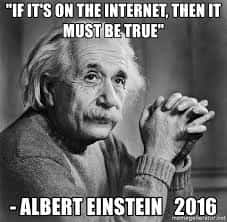How to Verify News on Social Media

The narcissist photos and posts on Facebook do not bother me anymore. What does bother me is that people spread fake news and some idiots believe them. And at times I have been unlucky to be on the “idiot” side of things.
Why people make fake news?
The opportunities are endless…
- Fulfill agendas (mostly political)
- To promote personal beliefs
- Make people biased towards something
- More likes and views, eventually leading to more revenue from ads
- It’s fun to spread rumors and see the world collapse…
Why people spread fake news?
It matches their personal belief. They don’t care about its impact. Tries to be the first person to share and be the center of attention (by engaging in comments/chat).
How to stop fake news?
We can’t. There will always be rumors. And with the rise of deepfakes, there’s a chance that this will increase even more. However, we can be smarter and take steps to prevent spreading them. The Poynter Institute (which is a school of journalism) says we should verify news by asking ourselves three questions.
- Who’s behind the information?
- What’s the evidence?
- What do other sources say?
Who’s behind the information?
- Is there an author’s name with the news? The absence of an author’s name is a red flag.
- Do you know the person who wrote it? Is he credible enough to write about it?
- Is the organization sharing the news reputed and reliable?
- Is the URL legit? Fakers often use misspelled URL links to look legit.
- Does the news identify itself as “sponsored content?” It means someone is paying to show you this, and I wouldn’t put too much on trust it.
What’s the evidence?
- Does the news properly cite sources such as “from where information was taken?” and “who said it?”
- Are images in the news fabricated? Right-click on the image to do a reverse google image search. URLs ending with .gov, .edu, and .org are more credible than websites ending with .com, .net.
What do other sources say?
- Are other sources also saying the same? If not, it could be a red flag.
- Even if the fundamental news is the same across other sources, the minor differences in details could be an indicator that not all parts of the story are true.
The above should be able to filter out most fake news. Along with these, Facebook also provides some tips to spot fake news:
- False news can have catchy headlines in all caps with exclamation points.
- False news sites tend to have weird layouts and misspelled words. Some stories are intentionally false. They are usually humorous or satirical.
Sharing is caring!